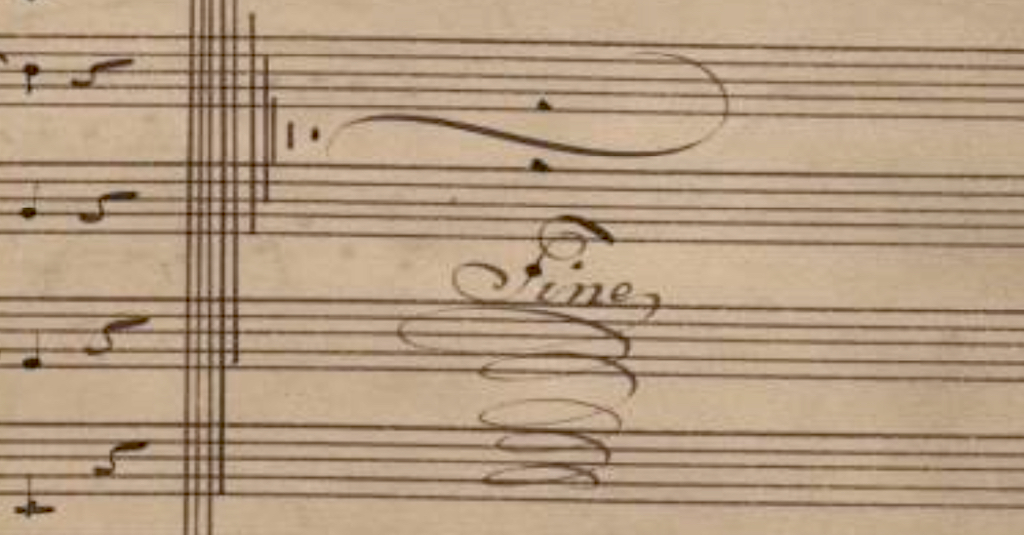Classical Music Diary No. 14

The uniformity of endings in classical music has been bothering me. Every piece seems to conclude with multiple soundings of the tonic chord. Composers will sometimes dress up these bits of aural clipart with rhythmic flair, but in most cases they stick to the dogma.
For an example, I’ll pick on “Sinfonietta” (1873) by German-Swiss composer Joachim Raff — mostly because I’ve been listening to it a lot since hearing the Holyoke Civic Symphony perform it last fall. The diminutive title is appropriate both for the length of the piece (about 25 minutes) and the stripped-down orchestra of woodwinds and French horns.
Each of the four movements is interesting, but they all conclude in the most predictable way. The first and fourth movements, in the home key of F Major, end with F chords struck multiple times. The third movement, in the dominant key of C Major, puts a C chord through descending inversions before hammering it home. By comparison, the second movement’s ending is adventurous: The tonic chord, F minor, is placed on either side of an outside-the-key C Major chord. Each time I listen, I think, Couldn’t Raff come up with anything better?
I often think back on Arthur Rubinstein’s recording of the scherzo from Frédéric Chopin’s “Funeral March” sonata. The pianist plays the movement’s final two notes in a way that I can only describe as offhand. Is he as bored with endings as I am?